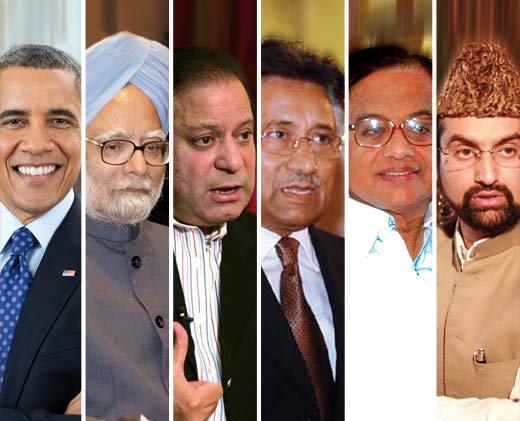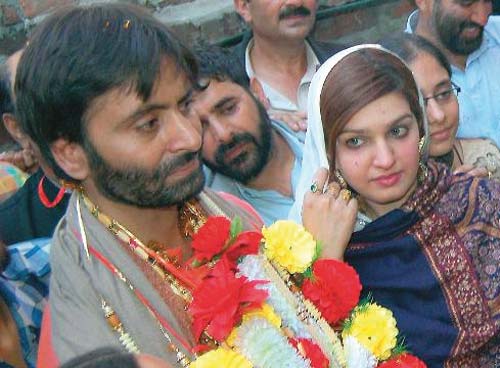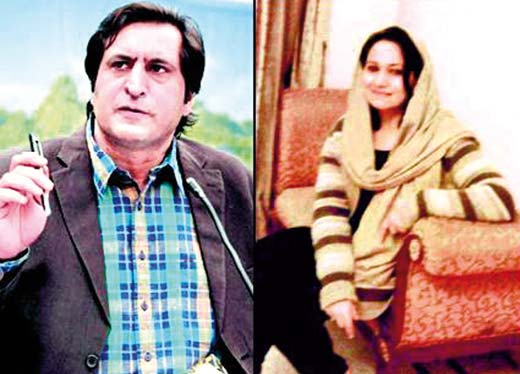Amid the roars of guns at the LoC, when Nawaz Sharief wished seeking Obama’s help on Kashmir, it angered many people from Delhi to Washington. Not many people know that US had made a major back-channel attempt on Kashmir in 2009 and it lasted barely a year. R S Gull offers details of the aborted initiative that Islamabad might be keen to revive now.
It all started with two interviews. After Barak Obama was elected the President, he spoke about Kashmir on two occasions. “Working with Pakistan and India to try to resolve Kashmir crisis in a serious way. Those are all critical tasks for the next administration. Kashmir in particular is an interesting situation where that is obviously a potential tar pit diplomatically.” Obama said during an interview with Time Magazine in October 2008 before getting elected as the President of USA.
“With respect to Kashmir, obviously this is a long-standing dispute between India and Pakistan; as I said yesterday, I believe that both Pakistan and India have an interest in reducing tensions between the two countries,” Obama said during a news conference in New Delhi in November 2010 after he was elected.
On January 7, 2009 when outgoing US ambassador David C Mullford visited foreign minister (now President) Pranab Mukhrejee for a farewell call, he could feel the gravity of concern Indian establishment had over the appointment of the special envoy.
“Mukherjee asked a series of penetrating questions about the incoming US administration, dwelling in particular on the appointment of a special envoy,” Mullford wrote on January 17. “Mukherjee was deeply concerned about any move toward an envoy with a broad regional mandate that could be interpreted to include Kashmir.” Mullford was told that such a broad mandate would be viewed by India as “risky and unpredictable” because it will expose issues of vital concern to India to the discretion of the individual appointed. The appointment smacked of “interference and would be unacceptable”, Mukherjee said the “the US-India relationship (should) not to be viewed primarily through the lens of regional crises”.
By January 30, 2009 the ambassador sent a detailed cable offering length and breadth of the concerns in India’s foreign ministry. Mullford reported two principal areas of ‘greatest angst’ in Indian foreign policy establishment: the talk of renewed US activism on Kashmir that aims to win Indian concession in return for Pakistani assistance on Afghanistan; and speculation that India will be viewed by the new administration primarily through the prism of a regional strategy rather than the context of a stand-alone bilateral partnership that is global in its scope. The third issue pertained to the “risk of damage to the US-India relationship if the US is unable or unwilling to exert sufficient pressure on Pakistan to clamp down on the jihadis who have targeted India, particularly those responsible for the Mumbai attacks.”
By deletion of Kashmir from the portfolio of Special Envoy for Afghanistan and Pakistan Ambassador Holbrooke had provided some comfort to the Indian foreign policy establishment, but many believed the new administration will seek to pressure India on Kashmir, the ambassador reported. He had mentioned his meeting with the Prime Minister on January 13 in which it was emphasized that “hands-off US policy on Kashmir that was followed by the previous US administration was wise and successful.”
This cable explains how staying low-key on Kashmir – to the extent that the ambassador or any high ranking US official skipped visiting J&K for five years, created “reservoirs of credibility for US diplomats” in Delhi. The cable suggested the US Kashmir policy should stick to what it publicly was: “It is not for the US to determine the status of J&K. A resolution must come through a process of engagement between India and Pakistan that takes into account the wishes of the people of J&K.” US diplomacy can achieve more while not getting involved publicly was the major advice to the new Washington administration.
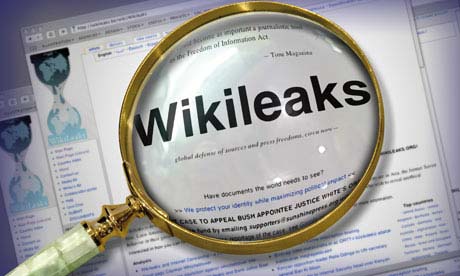 Asserting that any third party role on Kashmir will steadfastly be rejected by India, the cable explained by quoting the instance of British Foreign Secretary David Millband’s statement who had tried to link Mumbai attacks with Kashmir. In an interview with The Guardian on January 15, Miliband was quoted as saying “resolution of the dispute over Kashmir would help deny extremists in the region one of their main calls to arms, and allow Pakistani authorities to focus more effectively on tackling the threat on their western borders.”
Asserting that any third party role on Kashmir will steadfastly be rejected by India, the cable explained by quoting the instance of British Foreign Secretary David Millband’s statement who had tried to link Mumbai attacks with Kashmir. In an interview with The Guardian on January 15, Miliband was quoted as saying “resolution of the dispute over Kashmir would help deny extremists in the region one of their main calls to arms, and allow Pakistani authorities to focus more effectively on tackling the threat on their western borders.”
It was reacted fiercely. “The scorn heaped on Miliband has been interpreted as a clear message to the US,” the cable reads explaining how Indians killed the chicken to scare away the monkey.
The other factor for criticizing the initiative was that it had the potential of playing a spoilsport in the process of ‘reconciliation and prosperity’. “With Omar Abdullah as Chief Minister, they (India) have in place a young, forward thinking leader who could move the state out of its two decades of political paralysis,” the cable reads. It would embolden the militants, separatists, undercut mainstream political forces, force India to back off its engagement with Pakistan and roll back the gains that were made in last few months. “The Indian fear is that US attention to the dispute will upset this delicately balanced scenario.”
While cautioning against any public statement suggesting Delhi was under US pressure, the cable asserts India is not unwilling to share its ideas on Kashmir privately. “In order to be relevant we must walk a delicate line that is mindful of Indian sensitivities, recognizes the limits of what we can achieve, but reinforces steadily the urgency of working with Pakistan to reach a mutually acceptable resolution of the Kashmir dispute which takes into account the wishes of the Kashmiri people,” the cable says. “Indian NSA MK Narayanan told Senator Kerry in December that the two countries had agreed to a Kashmir formula in late 2006, but Pervez Musharraf’s steadily increasing domestic political difficulties derailed the deal. A solution, therefore, does exist.”
Offering Richard Holbrooke a sketch of what he could face during his India visit, Mullford wrote in his cable (February 12, 2009) that “there is continuing uncertainty and a degree of anxiety within the Indian foreign policy establishment over a perceived interest in US activism on Kashmir.” The cable suggested that India and Pakistan made “considerable progress” over the last four years in back channel discussions, to an extent that “an agreement in principle was in reach in late 2006” but Musharraf’s fall coupled with the Kabul and Mumbai attacks halted the progress on Kashmir.
But the cable was pessimistic if New Delhi will make any gestures despite having an improved situation in Kashmir. “It is not clear, however, that the government of India has the political will to make the kinds of gestures — such as reducing the security forces footprint — that Kashmiris need to gain some confidence in the Indian intentions,” Mullford commented.
Holbrooke landed in Delhi on April 8, only to listen praises for the US Afghanistan policy. Prior to his arrival, however, India’s foreign secretary Shiv Shanker Menon flew in mid March to have a series of meetings with the US leaders and officials on various bilateral issues including Composite Dialogue that lay frozen after the Mumbai attacks.
Charge d’Affaires Steven White in his April 2, 2009 cable, apparently in anticipation to Holbrookes impending visit stated that Indian officials emphatically reject suggestions of a link between problems in the Afghanistan-Pakistan border region and the India-Pakistan relationship, including the dispute over Kashmir – a key consideration that was once believed to be a factor for including Kashmir in Holbrooke’s basket. They also rejected the suggestion that India’s force posture was determined by the need to defend Kashmir, but rather by threats to Indian security from a hostile Pakistan and its support of cross-border terrorism. “They insist that any change in India’s force posture prior to an election, especially in response to foreign demands, would be impossible,” the cable reads. “Further complicating this dynamic, this year’s Spring thaw is likely to bring a reversal of the recent trend of decreased infiltration’s along the LoC.”
(M Yaseen Malik with his Pakistani wife Mishal Malik)
In the three substantive meetings during his visit on April 8, Charge d’Affaires Peter Burleigh wrote on April 16, Holbrooke was informed about “a dramatic increase in cross-border infiltrations” of “heavily armed, better equipped, and better trained” militants in last weeks.
NSA actually handed over a non-paper to visiting super-diplomat suggesting that infiltrators wore heavy woolens, white parka coats, windcheaters, rubber insulated snow boots, carried used pick axes besides butane gas cylinders to cut the fence.
In his cable to US NSA General Jones, Peter Burleigh wrote on June 18, 2009 that assurance are there on the Holbrooke’s appointment but “hypersensitivity remains in the general Indian public over the question of whether the US intends to interfere in Kashmir and /or sacrifice Indian security interests to US objectives in Afghanistan.”
In a subsequent cable on July 16, 2009, in anticipation of Hillary Clinton’s proposed visit to Delhi, Peter Burleigh wrote that it was an “opportune moment in the relationship between the world’s largest democracies” as Congress party is firmly in command at Delhi after polls sans anti-American partners. The cable notes that the bilateral relationship is better and has capacity to improve further. It refers to US exports to India tripling since 2004 as Indian companies have increasingly funded strategic investments in the US, with $3 billion in 2008 alone.
“Defense sales have risen from near zero in 2004 to over $2.2 billion already in 2009, with prospects for further expansion,” the cable notes asserting how the military modernaization is part of the role India assigns for itself at the global level as a major power. “India’s efforts to be the regional power in South Asia and act as a global player face their greatest challenge from India’s troubled relationship with Pakistan.” The cable sees India as “a burgeoning power in a tough neighborhood.”
A cable sent by Roamer on July 17, however, analyzed the efforts that Prime Minister Dr Manmohan Singh made to give up its policy of non-engagement with Pakistan by meeting top Pakistan official twice in a month: July 16, meeting in Sharm el Sheikh with Pakistani Prime Minister Gilani and prior to that Pakistani President Zardari on the fringes of the Shanghai Cooperation Organization (SCO) summit in Yekaterinburg. In neither of the two meeting did Kashmir figure. For both meetings, the media and the opposition BJP created a lot of noise accusing Dr Singh of “capitulation” to Pakistan. Although the “political fallout threatens to overshadow the potential positive developments” stemming from the meeting, the cable says, it nevertheless offers “a glimmer of hope” for future positive developments.
“Despite GOI’s insistence that the CD remains on hold, it is evident that Singh, who has held two high level meetings with the GOP in a month’s time, is attempting to move beyond a strategy of disengagement,” the cable concludes. “Such high-level engagement will pave the way toward a less hostile relationship between the two countries, but the relationship is still a delicate one which could easily rupture in the event of another major terrorist attack in India which links back to Pakistan.” The cable credits Dr Singh for trying to find a balance between a longstanding policy of engaging Islamabad and public anger and political pressure over Pakistan’s halting efforts to pursue and prosecute the Mumbai attackers.
All of a sudden, the US mission at Delhi was excited that Delhi has started moving on Kashmir regardless of any shift in Delhi-Islamabad axis. In a cable on October 21, 2009, the Washington is informed that Home Minister P Chidambaram’s announcement of October 14 that the Delhi will talk directly “with all shades” of separatists as long as they do not espouse violence, is the first time since early 2006 when willingness to have direct serious talks were made publicly. The move, the cable says is befitting for a changed political and security environment. “There is a political question to be resolved,” Chidambaram had said, adding, “once the broad contours of a political solution are arrived at we will make it public.”
“With the parliamentary elections out of the way, a strong mandate from the electorate, a feeble opposition and an insurgency that is at its weakest in two decades, the Prime Minister and the Home Minister are dealing from a strong hand,” the cable says. “It bodes well for regional stability that the GOI appears to be moving forward aggressively, on its own and without any prodding from others.”
(Sajad Lone and his Pakistani wife Asma Lone)
The announcement made in anticipation of Dr Singh’s planned Kashmir visit, Chidambaram said Delhi recognizes “many shades of opinion” in Kashmir will consult all as long as they stay non-violent. Part of Delhi’s forward movement on “reconciliation in Kashmir”, Chidambaram had stated that they will seek a political rather than a military/paramilitary solution, and one that is “honorable, equitable, and acceptable to (an) overwhelming majority of the people of Jammu and Kashmir.” He said this while acknowledging the special nature of the Kashmir issue: “unique geographical location and unique history” of Kashmir may require “an equally unique solution”. He had announced that JKP, the state police, would have primary responsibility for maintenance of law and order.
Chidambaram, according to the cable, had refused to be drawn into a discussion of the shape, form, timeframe or parameters for the talks, saying the government will follow the policy of “quiet diplomacy” away from the glare of the media. He said that the discussions will be made public at an appropriate time, when agreement on the “broad contours of a political solution” have been reached. The cable notes that the two sides were actually engaged. “Separatist leader Bilal Lone told Poloff in September that the GOI had approached the separatists quietly some weeks earlier and the two sides are now engaged,” the cable reads.
To prove that Delhi has softened its approach, the cable mentions: “The Pakistani spouses of separatist leaders Sajad Lone and Yasin Malik have joined their husbands in Srinagar after the GOI cleared their visa/residency applications recently.”
The cable says Kashmir has “broad political consensus” in favor of such talks as all three mainstream political parties – NC, PDP and Congress, are strongly supportive of this dialogue. “The common view of the mainstream political parties is that the separatists should be engaged because they represent an important Kashmiri sentiment, whether or not they have popular support and influence among the Kashmiri people at this point,” the cable reads.
Analyzing the “uncertainties”, the cable says the Indian effort will be first to bring separatists into the tent rather than leave them on the outside where they can continue to be a thorn. But separatists are divided. “Whereas in the past it may have served the GOI to promote division among the separatists, the GOI effort today will be to see a united separatist camp, one with which they can cut a sustainable deal,” the cable reads. It asserts that while Delhi will rope in all others, it will be risky to keep Geelani out to stay as “only voice of uncompromising anti-India sentiment in the valley”. Apart from protecting separatists from physical harm, the cable says Delhi may not like a strong separatist platform at the cost of the mainstream parties.
“The GOI would want to avoid a dialogue that strengthens the separatists so much that it undermines the mainstream political parties, which have remained part of the political process in Kashmir and played by the GOI’s rules,” the cable reads. “The mainstream political parties would probably not be so supportive of a GOI-separatists dialogue if the separatists had not been as weak as they are today in terms of popular support in the valley.”
A day after on Oct 22, 2009, another cable from US embassy in Delhi offers a way out of what Delhi could possibly do. It sees “reconfiguration of the security apparatus” in J&K that puts JKP at the lead with paramilitary “takes a backseat” and the Army “defends the borders”. This, the cable said, is “an important confidence building move to address the perception of many Kashmiris that they are under siege by an occupying military of several hundred thousand security personnel,” who are outsiders and operate “in a more alien environment and tend to be more nervous and edgy.” Withdrawal of two Army battalions added to the belief that something is happening.

Political parties in Kashmir were supportive of the view. Congress’s Prof Saifuddin Soz asserted Delhi should provide “emotional satisfaction” to Kashmiris and withdraw AFSPA, PSA and DAA, release detainees not posing any threat and evacuate public buildings and facilities occupied by the security forces. PDP wanted nothing cosmetic but real CBMs like military drawdown, return and rehabilitation of militants, and reaching out to families of slain militants. Bilal Lone wanted easing cross-border travel restrictions between the valley and PaK suggesting Kashmiris could “hop into a car and do a day trip to Muzaffarabad”.
It is in this cable that the US mission is suggesting the range of CBMs that Delhi can have in Kashmir. “Beside starting a dialogue with separatists, emphasizing a political solution, reorienting the security apparatus with the J&K police as its public face, and continuing with generous development funding in the state, there are many more CBMs that could be taken up by the GOI,” the cable says while mentioning some “low hanging fruit that could be implemented quickly without any big political or security implications.”
Its list for Kashmir specific CBM menu included conducting panchayat elections at the earliest; release selected not hardcore militants who do not pose any serious threat; release prisoners who have been incarcerated longer than the court-directed sentences; discontinue the practice of re-arresting accused militants who have been released by courts; stop the misuse of the Public Safety Act (PSA); repeal, selectively repeal or be more judicious in use of AFSPA, and DAA; prosecute transparently and publicly security force personnel involved in human rights violations; relocate security forces camps out of public facilities; more judicious use of house searches and road blockades by security forces; gradual pullback and pullout of the paramilitary and Army from visibility in the day to day life of Kashmiris; replacement of the paramilitary and Army by the J&K police; empower the SHRC; stop the continued harassment of released/surrendered militants and their families; loosen further travel controls on separatist leaders; make the bus links across the LoC more traveler friendly; ease travel restrictions on cross border travel; increase the number of transit points; open telephone lines across the LoC; encourage separatists to participate in future elections by providing them incentives – funding, security, press coverage; and strengthen civil society by making it easier for NGOs to operate.
“The above list is not intended to be prescriptive,” the cable notes, adding, “It is provided to help Washington understand the complicated, multi-faceted problem facing the GOI in Kashmir as it moves forward.” The cable mentions that Delhi is aware of these and other steps it could take and is carefully picking and choosing what is politically possible.
Soon, Prime Minister Dr Manmohan Singh flew to J&K on October 27-28. A cable shot two days later informed US that while Dr Singh did not announce any dramatic new initiative, he was “restrained and free of rhetoric” on Pakistan. He outlined the difficulty of resuming the composite dialogue but offered “narrower talks” on Kashmir-related cross-LoC trade and travel matters and on humanitarian issues concerning prisoners. On Kashmir, he offered dialogue with those shunning violence and promised “unprecedented” resources for J&K’s development while asking people that a “new chapter” was round the corner in the peace process. Dr Singh harshly react the OIC statements asserting Delhi’s policy that there was no room for a third party.
As sections of troops moved out of valley from Islamabad and Pir Panchal Valley, US diplomats saw the ‘Military Drawdown’ a clear indication of coming events. The cable talked about the close door process that Chidambaram announced earlier asserting the Prime Minister will be “roped in when the GOI is ready to announce the most significant of these measures, such as rescinding the Armed Forces Special Power Act or a major military drawdown.”
Slightly a month later, US diplomats in Delhi cabled Washington on Nov 20, 2009 saying Mirwaiz Farooq-led separatists have indicated to Embassy that they intend to engage with a seriousness of purpose and are determined to get “results”. The Mirwaiz and his colleagues plan to visit Islamabad after November 27 in a bid to start a Srinagar-Islamabad dialogue, the cable said so that “they can bring Islamabad on board any agreement they reach with the GOI”.
“As promised by Home Minister P Chidambaram on October 14 in Srinagar and endorsed by Prime Minister Manmohan Singh on October 28 in the valley, the dialogue between GOI and the Kashmiri separatists is underway,” the cable reports. “Both sides have publicly acknowledged that the process has begun. In line with Chidambaram’s October 14 announcement that the discussions will be “quiet” and “behind closed doors,” the GOI has refused to share any details. The separatists have been more willing to talk to the press but have also been evasive on the substance of the discussions.”

The cable cited a newspaper report suggesting “..Chidambaram and the Mirwaiz” had met twice, “once before the Home Minister’s October 13-14 visit to Srinagar and once last week.” It reads: “Many of the (newspaper) stories cited unnamed officials in the Home Ministry as sources and described in detail the vehicle changes and pick-up/drop-off maneuvers made to ensure the meetings in New Delhi were clandestine.” In a November 18 conversation with political officials of the US embassy, the cable noted, Bilal Lone confirmed that the separatists are talking to the GOI. So did Prof Abdul Ghani Bhat.
In another cable that was shot the same day, the US diplomats asserted the requirement of a possible Mirwaiz-Delhi deal require blessing of everybody including Yasin Malik, Syed Ali Geelani and militant outfits like Lashkar-e-Toiba, Hizb-ul-Mujahideen, and Jaish-e-Muhammad.
“..there is some glimmer of hope that given time the Mirwaiz may get a deal with India that is acceptable to Islamabad, to mainstream political parties within Kashmir, and even to Syed Ali Shah Geelani and his hard-line separatist ilk within Kashmir,” the cable said. “But what remains a bridge too far at this point is that the Mirwaiz and his faction will be able to reach a deal that is acceptable to Kashmir-focused terrorist groups such as LeT, JeM, and HM in Pakistan, or receive guarantees from India and Pakistan of protection from assassination by these groups.” The cable conveys Washington that “we should not expect the Mirwaiz and his colleagues to reach any breakthrough deal with India until they feel secure against the LeT/JeM/HM assassination threat.”
Further boost to the process came on December 2, 2009 when Chidambaram stated in Parliament that Delhi would withdraw “significant” military and paramilitary forces from J&K. Analyzing the significance of the move, a cable drafted and sent on December 8 said the “drawdown in security forces is particularly significant because softening the security footprint is one of the most powerful confidence building measure that the GOI could take in its reconciliation efforts with the Kashmiri people.” The Americans expected “any military pullback” to be “slow and measured” so that Delhi is able to “reverse it quickly” if there are any signs of an increase in insurgent activity.
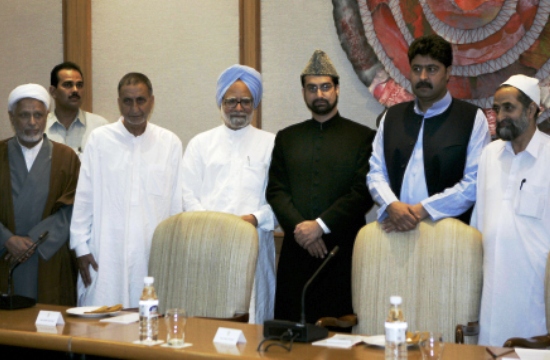
It was at the peak of this process that Mirwaiz aide Fazl ul Haq Qureshi was attacked by shadowy al-Nasireen on December 4. Even though the Mirwaiz and Chidambaram were quick in condemning the attack and asserting the assault on Qureshi will not cow-down them, the cleric according to December 14, 2009 cable “displayed a resigned demeanor, saying – what does one do with these elements.” Mirwaiz, according to this cable “drew parallels with previous assassinations, including that of his father and other separatists who were forward leaning on peaceful solutions.”
Seeing the attack as a “clear warning” against seeking “negotiations and accommodation with India,” the cable asserts it was no new strategy. “Their objective is to derail and disrupt dialogue even before it gets going.” The cable said the attack “will give them pause to consider the personal physical risks they are taking” and the “fear of such attacks” remains “a serious obstacle to a successful outcome in the GOI-separatist talks.”
It might have been the factor that when US special envoy on Afghanistan Holbrooke had a detailed meeting with Foreign Secretary Nirupama Rao on January 18, 2010, she, according to the cable of January 28, “expressed concern” over sharp increase in “unseasonal Pakistan-inspired violence and preparation for violence”. She talked about incidents of shelling on LoC, increased infiltration, and transfer of terrorist hardware for trying to “stir the pot” in Kashmir. NSA Narayanan met Holbrooke the same day but the discussion lacked any reference to Kashmir.
The situation changed completely by the end of January. A detailed note cabled by US diplomats on February 1, 2010 suggested that amid “few positive moves”, there has been setback to peace and reconciliation. “On the plus side, the Defense Minister unveiled a few more CBMs (Antony had said the army will reduce its visibility further and army had stated it will evict from schools and hospitals it occupies), and Kashmir policy became consolidated under the more forward leaning Home Minister PC Chidambaram after the exit of National Security Advisor MK Narayanan, who played a dominant, conservative and often obstructive role in GOI policy on Kashmir,” the cable said. “The GOI-separatist dialogue that kicked off last year stalled amid an assassination attempt, complaints and finger-pointing, with accusations that Pakistan has instructed the separatists to suspend the dialogue until India agrees to a bilateral dialogue with Pakistan.”
The cable said Mirwaiz Farooq, Prof Bhat, Bilal Lone and Syed Agha Hassan told embassy staff that the attempted assassination of their colleague Fazal ul Qureshi was intended to be a clear message to them of the perils faced by those who talk to the GOI. “They conceded that the attack on Qureshi had made them more cautious in engaging with the GOI,” the cable said.
“Mirwaiz and his colleagues added that the Srinagar-Delhi dialogue has for all practical purposes been suspended by them, at least for now,” the cable quoted them telling their political staff. “They admitted that they had lost some political ground in the valley, not because the Kashmiri people were opposed to talks with the GOI but because opponents had run an effective campaign which questioned the “quiet” nature of the talks, with warnings about cutting secret deals and selling out.” Apart from accusing their rivals, the moderates even pointed fingers towards “elements within the GOI’s security apparatus” who undermined talks “by leaking and publicizing information about the meetings despite Home Minister Chidambaram’s insistence that the dialogue occur behind closed doors.” While they regretted that Delhi was unwilling to “associate separatists with any of the CBMs it has implemented in the state”, the mainstream parties in the state parties were “working to sabotage it for fear of the separatists gaining political ground.”
As the central government officials suggested to Americans that Islamabad is planning “breaking the lull” in Kashmir, the analysis that Mirwaiz provided was not different. “The Mirwaiz and his moderate separatists told Poloff that they sense a change in approach from across the border,” the cable said. They mentioned many militant actions that were suggestive of a “regrouping” for a “fresh offensive”. Year 2010 did not see militancy as it witnessed summer unrest that saw killing of 122 civilians. Years 2011 and 2012 witnessed a gradual increase in events and 2013 is still recording how worse it could get.


